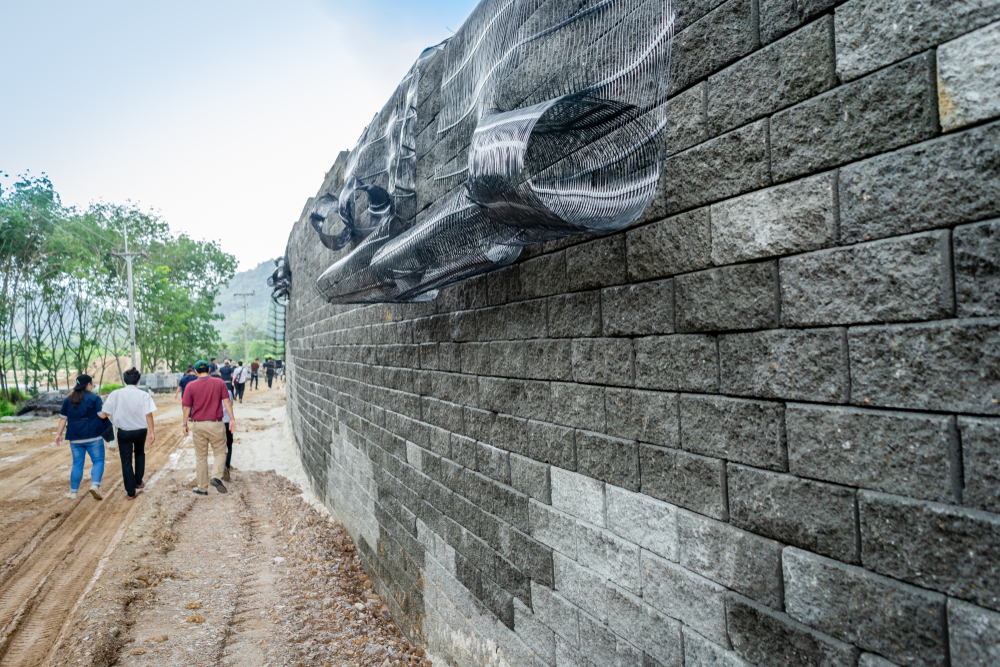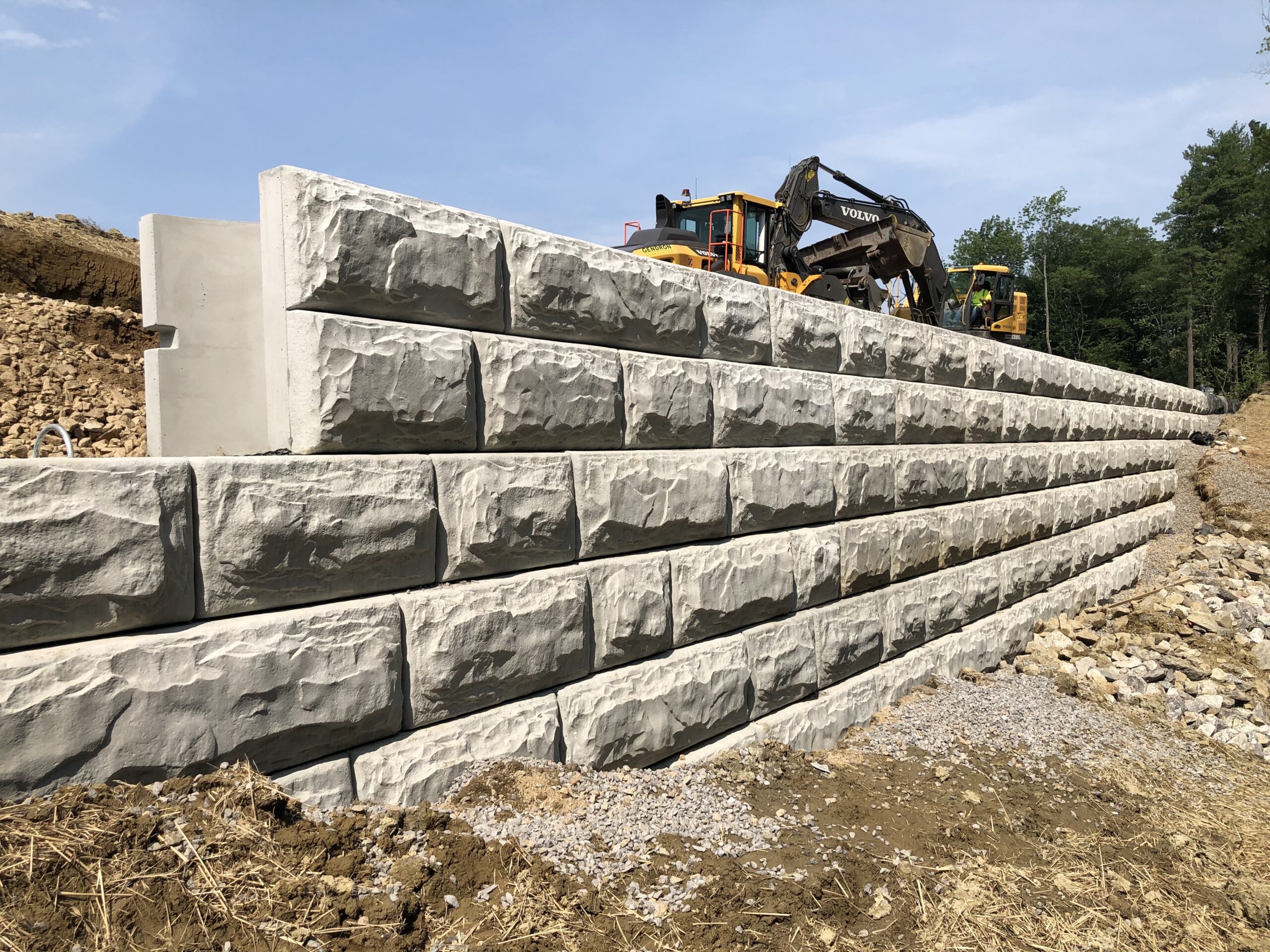Sustainable options for your next OKC Precision Retaining Walls project
Secret Considerations for Structure Reliable Retaining Walls in Your Backyard
When you're taking into consideration constructing a keeping wall in your backyard, it's essential to consider a number of crucial elements. The wall's purpose, the materials you'll use, and the particular dirt conditions can all affect its performance and long life. You'll additionally need to navigate regional building ordinance and plan for appropriate drain. However just how do you assure your layout not just fulfills these needs but likewise improves your landscape? Allow's check out the crucial steps with each other.
Understanding the Purpose of Your Retaining Wall
When you think of building a maintaining wall, consider its major purpose: supporting dirt and preventing disintegration. Retaining walls provide vital support for sloped landscapes, assisting to preserve soil honesty. You'll find they're vital in locations where water drainage could or else get rid of soil, bring about expensive repair services and landscape damage.
By keeping back planet, these walls develop degree surface areas for yards, patio areas, or paths. This not only enhances your lawn's visual appeals however likewise advertises better water drainage, minimizing water pooling in unwanted areas. If you're dealing with high slopes, a well-constructed retaining wall surface can stop landslides, guaranteeing safety and security for you and your building.
Inevitably, recognizing the purpose of your retaining wall surface will certainly direct your style decisions and help you create a useful, sturdy structure that satisfies your needs. So, take a moment to review your landscape; it'll settle in the lengthy run.
Choosing the Right Products
When selecting products for your retaining wall, you'll intend to take right into account toughness, looks, and price. Each aspect plays an essential role in ensuring your wall surface stands the test of time while looking wonderful and fitting your budget. Allow's check out how to make the most effective options for your project.
Product Sturdiness Aspects
Selecting the ideal materials is crucial for the durability and performance of your retaining wall surface, given that their resilience directly affects the wall's ability to hold up against environmental tensions. Beginning by considering your local climate; materials like concrete and rock withstand wetness and temperature fluctuations well. If you reside in a location susceptible to heavy rainfalls, select materials with great drain buildings, like gravel or permeable blocks, to avoid water build-up.
Some materials perform much better in particular soil types, so it's important to match them as necessary. Choosing long lasting products guarantees your retaining wall stands strong, protecting your backyard for years to come.
Visual Layout Options
Resilient materials not only assure your retaining wall's structural integrity yet likewise play a key duty in its visual allure. When selecting the best products, believe about exactly how they complement your landscape. All-natural stone supplies an ageless, rustic look, while cinder block can provide a sleek, contemporary finish. You might likewise consider using timber for a cozy, organic feeling. Color and structure issue, as well; pick shades that integrate with your home and garden. Don't forget the wall surface's shape-- rounded walls can develop a softer appearance, while straight lines can really feel more organized. By thoroughly picking materials that line up with your visual vision, you'll enhance your outside room while ensuring your wall stands solid versus the elements.
Cost-Effectiveness Analysis
Choosing the right products for your retaining wall isn't just concerning looks; it's likewise important for your budget. When picking materials, consider both ahead of time expenses and long-term longevity.
Do not fail to remember to consider upkeep expenses as well (OKC Precision Retaining Walls). Some materials, like all-natural rock, can add elegance and need less maintenance, while others may require routine treatments
Inevitably, consider the pros and cons of each option versus your budget and the wall's designated purpose. Spending intelligently in products currently can avoid costly problems down the roadway. Select products that stabilize price and performance successfully.
Assessing Dirt Problems and Drain
As you start your job, reviewing dirt conditions and water drainage is necessary for the success of your retaining wall. Begin by checking out the kind of soil in your lawn. Sandy dirt drains well yet lacks stability, while clay soil can maintain wetness, resulting in pressure on your wall. Examine the dirt's dampness content by excavating a tiny opening and observing how rapidly it dries.
Following, evaluate the slope of your yard. If water normally streams towards your wall, you'll require to execute a drainage remedy to avoid disintegration and pressure build-up. Think about mounting perforated pipelines or crushed rock backfill behind the wall surface to assist in drain.
Last but not least, observe any kind of close-by trees or plant life; their roots can impact dirt stability. By understanding your More Bonuses dirt problems and carrying out appropriate drain, you'll create a strong foundation for your retaining wall surface that stands the test of time.
Adhering To Local Building Regulations
Prior to you begin building your retaining wall surface, you require to study local regulations to ensure compliance. It's important to comprehend what allows you must obtain, as this can conserve you from costly penalties or needing to redesign your job. Taking these actions seriously will assist you build a risk-free and efficient structure.
Research Local Regulations
Recognizing local policies is essential when preparing your retaining wall task, particularly considering that building codes can differ considerably by location. Look for guidelines on wall surface elevation, materials, water drainage systems, and structural honesty. By doing your research upfront, you can assure your retaining wall surface satisfies all needed codes and blends flawlessly right into your yard.
Acquire Essential Licenses
Once you have actually looked into neighborhood guidelines, the following action is to obtain the necessary permits for your retaining wall project. They might require particular plans or design assessments, specifically for bigger walls. Protecting the right approvals can conserve you from pricey fines or having to dismantle your wall surface later.

Preparation the Style and Looks
As you commence planning the layout and aesthetics of your retaining wall surface, take into consideration how it will harmonize with the bordering landscape. Think of the products you'll make use of-- rock, brick, or concrete-- and how they'll complement your home's design and the all-natural components in your lawn. Pick colors and structures that blend flawlessly with existing features like patios, pathways, or gardens.
Following, envision the wall surface's form and elevation. Bent walls can soften a stiff landscape, while straight lines might communicate a more modern-day look. Do not fail to remember to integrate plants and plant around the wall surface for a natural touch; this can boost its charm and incorporate it into the environment.
Lastly, keep in mind functionality. Your layout must not only be visually pleasing but also offer its objective properly. By attentively planning these components, you'll develop a preserving wall that enhances your yard's charm while satisfying its architectural duty.
Computing Elevation and Density Demands
To develop a tough retaining wall, you need to precisely calculate its elevation and thickness requirements based on the soil problems and the height of the slope it will certainly sustain. Start by examining the slope's angle and the kind of dirt, as different soils exert differing quantities of stress.
For walls over 4 feet high, take into consideration a thickness of a minimum of 12 inches. If the wall is taller, enhance the thickness proportionally to keep stability.
Next, determine the height of the wall surface by gauging the vertical distance it needs to preserve. For every single foot of height, you should generally prepare for a density of one-third of the wall surface's elevation.
Always remember to make up additional elements like water drainage and backfill, which can affect your wall's layout. Correct calculations now ensure your retaining wall surface stands solid and lasts for many years to find.
Maintenance and Longevity Factors To Consider
While preserving your retaining wall might look like a reduced concern, overlooking it can bring about substantial problems in time. Regular inspections are essential; look for fractures, protrudes, or any indicators of water damages. Attending to these problems early can save you from costly repair services later on.
Keep an eye on water drainage systems, as well. Obstructed drains pipes can trigger water to accumulate, exerting pressure on your wall surface and compromising its stability. Clear debris and guarantee appropriate circulation to preserve long life.
You may additionally intend to review sealing your wall surface to safeguard it from dampness and weathering. Depending on the product, this could require reapplication every couple of years.
Lastly, landscaping around your wall surface can sustain its integrity. Prevent growing large trees nearby, as their origins can threaten the foundation. With positive upkeep, your retaining wall surface can offer you well for years to come.

Often Asked Concerns
Can I Develop a Retaining Wall by Myself, or Should I Employ an Expert?
You can absolutely develop a maintaining wall surface yourself if you have the right tools and knowledge. Hiring a professional warranties it's done correctly, especially for bigger or even more complicated frameworks. Consider your skill level prior to making a decision.
What Are one of the most Common Mistakes Made When Structure Retaining Walls?
When developing retaining walls, you might forget correct drain, skip making use of the ideal materials, or forget reinforcement. These common errors can result in structural failing, so take your time and plan carefully to stay clear of concerns.
Exactly how Do I Know if My Retaining Wall Needs Support?
You'll recognize your retaining wall needs support if you see splits, leaning, or protruding. Look for water pooling behind Homepage it or dirt disintegration see near the base. Address these indications without delay to prevent more damages.
What Plant kingdom Are Ideal for Landscaping Around a Retaining Wall?
When landscape design around a keeping wall, take into consideration making use of low-maintenance plants like succulents, ornamental grasses, or creeping ground covers - OKC Precision Retaining Walls. They'll flourish in those conditions and add elegance while preventing dirt disintegration around your wall surface
Exactly How Can I Prevent Disintegration Around My Retaining Wall?
To avoid erosion around your retaining wall, you can grow ground cover, use compost, and install drain systems. On a regular basis check for water build-up and change landscape design to reroute overflow far from the wall surface.